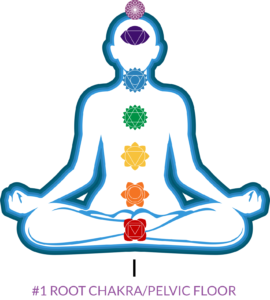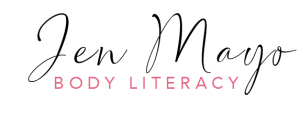When was the last time your doctor talked to you about your pelvic floor? Unless you are experiencing incontinence or just had a baby, chances are pretty good your answer is never. But there is a lot more to the pelvic floor than just supporting a growing fetus or preventing you from peeing your pants when you laugh, sneeze, or, God forbid, jump on a trampoline. And if you are a man, the chances of ever having discussed pelvic floor health with your physician are slim to none.
Weak, hypertonic, and inflexible pelvic floor muscles are directly associated with a variety of physical ailments including digestive dysfunction, pelvic organ prolapse, pelvic pain, urinary incontinence, bowel incontinence, pelvic pain, sexual pain, anorgasmia, and erectile dysfunction, just to name a few. Indirectly, as we will explore, however, pelvic floor issues can contribute to downstream issues that affect physical, mental, and emotional health.
In Eastern healing traditions, the pelvic floor is referred to as the root chakra, or the first chakra. The chakra system is a complex, ancient energy system that originated in India. Within your body, there are seven key energy centers. Chakra is a Sanskrit word meaning “wheel”. It references spinning disks of energy in the body, and to maintain optimal health, these energy centers should stay open and aligned. When they become blocked, disease in the body and mental imbalance manifest.

Traditionally, Eastern philosophies embrace a holistic approach to medicine and wellness versus a parts model more common to conventional allopathic medicine. In Western medical terminology, the seven main energy centers directly correlate with key bundles of nerves in the body. Eastern and Western medicine both address many of the same issues but often use a different vocabulary to communicate similar concepts. As such, each chakra corresponds with different emotions and life experiences that can affect physical, mental, emotional, and spiritual wellbeing, and disruptions in one will often create imbalances in others. Anxiety, for example, can often show up as digestive issues or back pain in the physical body. Paying attention to your physical symptoms while tuning into your emotions, relationships, and life experiences and comparing them with those outlined in the chakra system can be very telling and provide a more comprehensive road map back to health and vitality when things go off course.
Most people have lost their connection to their pelvic floor and lack the awareness for it largely being in a state of constant contraction. Without intentional awareness for this neglected part of our anatomy, we likewise lose sensation, flexibility, and tone, all of which are required to support all of the internal organs above it, maintain healthy bladder and digestive function, support sexual health and pleasure, and creates a physical state that supports being in a rest, digest, and heal (parasympathetic state) rather than a chronic state of fight or flight (sympathetic state). The root chakra houses our primal instincts and fears. It relates to our sense of safety. When our safety is threatened, it causes the pelvic floor to become hypertonic, or perpetually flexed. And so begins a negative feedback loop. Stress, trauma, tension, and threats to our primal feelings of safety cause the the pelvic floor to clench… and clenching the pelvic floor causes stress and tension that affect most other organs and systems of the body and mind.
Breaking the negative feedback loop starts with self awareness of the pelvic floor. Learning to recognize when those muscles are clenched is the first step in creating a more supple foundation for the organs it supports and shifting the body from a state of fight or flight to rest, digest, and heal. Shifting the body out of chronic sympathetic nervous system activation, or fight or flight, is the foundation of Body Literacy. There is a trickle down effect (or trickle up effect?) on hormone production and balance, on psychological wellbeing, on reproductive, digestive, and bladder health, on muscular and back health, and so on.
Stress is responsible for upwards of 90% of all chronic disease. Living in a state of chronic stress primes the body and mind to live in a place of fear as a baseline of normal. While acute stress is healthy and necessary to keep us alive, always on stress will literally kill you in a manner that often degrades quality of life for decades of what should be healthy, vibrant years. Stress, however, is a choice and something that can be addressed once you have awareness of it and take ownership of it. Understanding the connection between stress and pelvic floor health is a key component missing in many doctor’s offices.
The healthcare model of the future will acknowledge that physicians, while an important component of healthcare, are not the end-all-be-all of shifting away from disease management medicine to wellness cultivation healthcare. Incorporating patient empowerment models that encourage individuals to be the executives of their own health and establishing educational structures that impart tools for those who want to feel really good, rather than just numbing pain, will be the cornerstone of true healthcare.
The good news is that that time is now, at least for individuals who are tuning into their intuition rather than deferring their wellbeing to an authoritarian model of medicine that demands compliance rather than encouraging patient led healing. It may be that tuning into your pelvic floor is the missing puzzle piece for overcoming seemingly unrelated physical and mental health conditions. Employing a conscious movement exercise regimen that focuses on both relaxing and strengthening the pelvic floor muscles while fostering the mind-body/body-mind connection is an essential component of a holistic health plan.
While pelvic floor issues are frequently thought of as a women’s health issue, it should be noted that pelvic floor health is also extremely important for men’s health. Just as with women, the pelvic floor supports all organs above it and is essential for digestive and bladder health and sexual functioning. Many men faced with sexual health issues such as erectile dysfunction are often handed a prescription for pharmaceuticals like Sildenafil (Viagra) without first addressing the whole person, particularly the role of the pelvic floor in both physiological functioning as well as psychological wellbeing required for sexual wellbeing. An opportunity is missed when medicine jumps to symptom quick fixes rather than treating root causes. The long term consequences for overlooking root causes can lead to life threatening conditions as systemic issues are allowed to continue to fester beneath the surface for years. Your pelvic floor may be whispering to you that there might be greater health disturbances lurking around the corner in years to come.
Beyond exercises specifically designed for pelvic floor health, help through holistically minded pelvic floor physical therapists and some forms of energy medicine can be helpful for healing the pelvic floor. Cultivating awareness for this set of muscles is the start to a healthy pelvic floor. There are even weight lifting and mind-body/body-mind meditation practices specifically designed to increase pelvic floor tone, flexibility, and interoception. Cultivating this awareness and allocating time in your schedule to focus on building a strong but supple pelvic floor is particularly important for anyone who has experienced sexual trauma. You can read more on about the broader definition of sexual trauma and why sexual health is imperative to overall health in my article, Why Sexual Health Matters. The bottom line is your pelvic floor provides a foundation for wellness that should not be overlooked, and self awareness is key to every holistic healing program.


